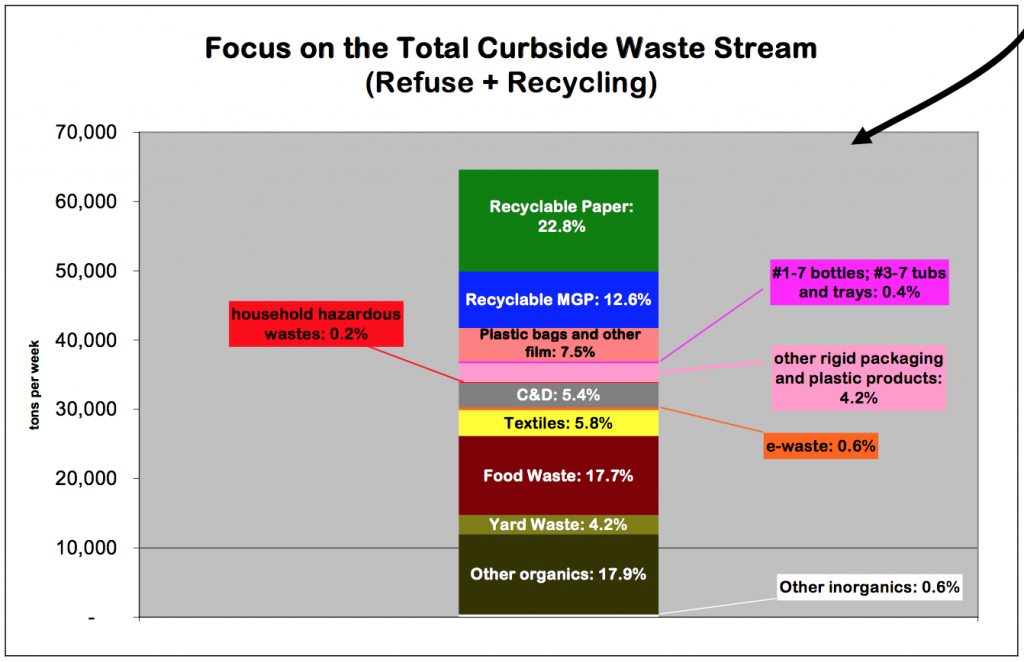Measured human behavior = capacity for behavior change.
Widely accepted in other municipal pursuits, this concept is still under-acknowledged in the field of waste management, as guest lecturer Kate Mytty discussed in her presentation of waste tracking research conducted in the Indian cities Pune and Muzzafar Nagar.
Muzzafar Nagar’s informal trash pickers, who live on sorting and selling waste to vendors who use the waste as raw materials, are not organized or recognized by the government. Often from the very underprivileged classes or slums, these trash pickers have internalized an intricate, 47-category system for sorting waste. The categories include predictable categories like paper and metal, and range up to the most lucrative category of all, human hair, which is resold at up to $20 per kilo. Most categories sell for cents per kilo.
Kate observed this intricate sorting system, an informal example of quantification, playing out in a similar manner when she researched the volume and demographics of residential waste in Pune. Through a local NGO, she organized a couple dozen college students to survey the volume of waste, household size, and household type in several residential areas of varying income: a kind of waste census. She found that the average Pune resident throws away about a pound of waste per day (as compared to almost five pounds from the average American), and that 30-50 percent of the city’s waste is from high-income residential areas.
These kinds of numbers, combined with the fact that Pune could save more than $400,000 per year if it were to systematize the recycling currently conducted by informal waste pickers, suggest the power to quantification in the waste management sector.
In the US, where the affordances of waste management systems and societal norms perhaps make for more straightforward quantification, there are a number of sensors that can be applied, particularly methane sensors at the landfill level, and weight sensors at the individual level. At the individual, “quantified self” level, the combination of passive sensing, active logging on the part of the individual, and incentive systems combine to power a real transition from waste to reuse, allowing individuals not only to be more aware of what and how much they waste, by also to be more aware and motivated to reuse materials before they hit the wastebin.
Waste is a universal topic, and I was pleased to see Kate’s presentation generate such a participatory discussion amongst our class. Topics included negative versus positive incentives, the particular metrics in use by waste management systems today, the narratives being formed around waste tracking, e-waste, economic incentives, and DSNY’s focus on the NYC school system as a next step in improving waste-making behaviors. Varun, who grew up in India, highlighted the importance of attitude change in the process of capacity change: even if a person knows how much he is wasting, he won’t necessarily stop throwing used bottles out the car window if he isn’t taught the ramifications of this attitude.

TODAY’S AGENDA
- Announcements
- My responses for Session 4 and 5
- QSAT collective site
- Who’s not grouped?
- Case study on tracking waste, by Kate Mytty, MIT DUSP & PSC (slideshow link).
- Discussion with Kate Mytty.
- Break.
- iOS development with Bluefruit LE.
ASSIGNMENTS FOR NEXT WEEK
- Write a short midterm project proposal. Please include
- Preliminary Background / Prior Work / Lit Review, with relevant discussion of previous lectures
- Your project concept. Why is it significant? How does it fit into “Quantified Self” and “About Town” (smart cities)?
- What you aim to make and present on March 24
- Your teammates. I encourage you to work in groups.
- Your timeline
- Technical considerations (materials, supplies, tools, questions)
- Possible challenges
- Optional: if you plan to develop further in iOS, try to write code to send me an in-app email. By finishing today’s crash course on your own, you will be able to do this.